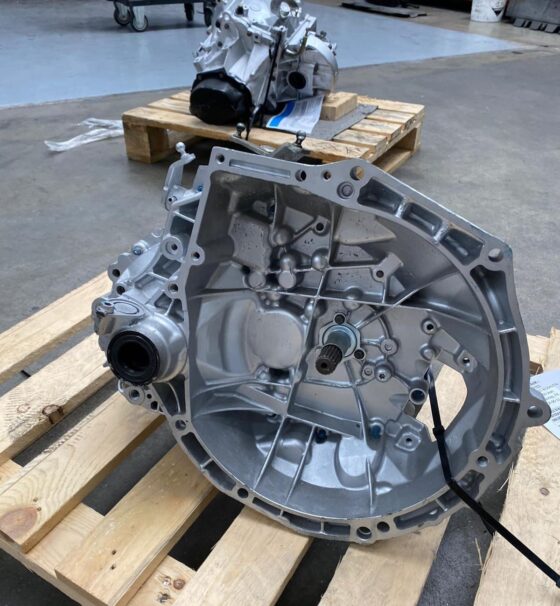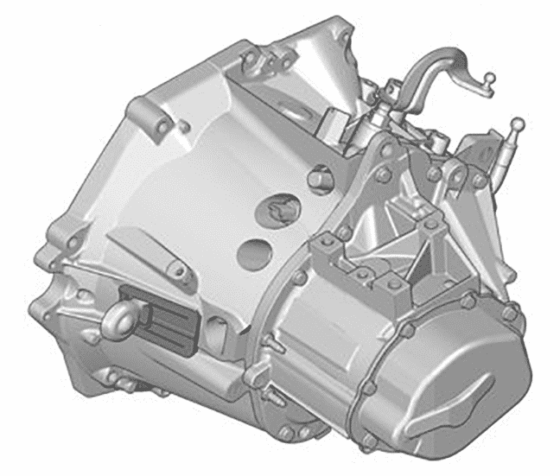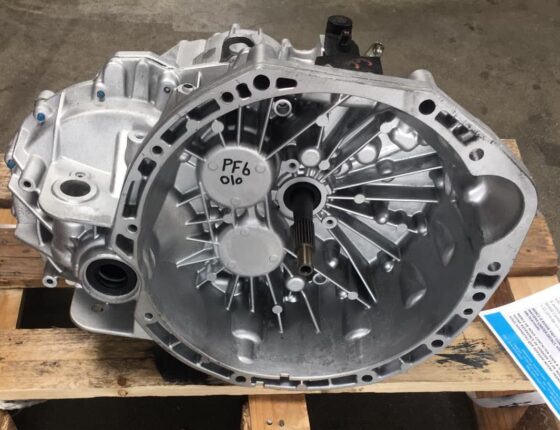Launched in 2004 by Nissan by Nissan, the Note is mainly sold on the European and Japanese markets. Available in three generations, the most recent, launched in 2020, is only available in the Land of the Rising Sun. Based on the CMF platform platform developed as part of partnership with Renaultthis latest model features a powerful electric motor.
Impeccable service
Gearbox broken? We help you identify and order your model
To set itself apart from the competition, Nissan plays on the car's larger dimensions and comfortable interior space. Families in particular appreciate trunk space and other storage spaces, such as the glove compartment and additional space under the front passenger seat.
The Nissan Note also offers a pleasant ride and technical reliability of its components. However, it's not impossible for your vehicle to malfunction, and the gearbox is no exception. How best to maintain it extend its life ? What to do in the event of a breakdown? All the answers to your questions are in this article!
Under the hood of the Nissan Note: technical specifications
Depending on the market for which it is intended, the Nissan Note has a number of differences that are worth noting. These include the transmission mode is generally front-wheel drive: the engine's power is distributed to the vehicle's front wheels, resulting in better roadholding and fuel savings. However, the Japanese public can benefit from all-wheel driveavailable as an option. In this case, all four wheels of the car are driven, and a transfer case is added to the gearbox to balance engine power.
The type of Nissan Note gearbox is variable. North Americans prefer an automatic system, while Europeans are accustomed to a manual gearbox. Several combinations are available, some of which are dictated by the choice of engine. Sometimes it's even a continuously variable transmission (CVT) (CVT) transmission system.
Taking care of your gearbox: everyday reflexes
The right gestures for a healthy gearbox
If you drive a car with a manual gearbox manual gearboxIf you're driving a car with a manual gearbox, false manipulations and careless errors are far more common than with an automatic version.
However, it is easy to adopt good habits in order to effectively preserve the transmission system :
- Do not keep your hand on the gearshift lever when you're not using it. This bad habit causes the gearbox's internal cogs to come into contact with each other, resulting in premature wear;
- Always shift into neutral during short stops, such as at traffic lights or in traffic jams, to take the strain off the clutch system (and your leg!);
- As far as possible, avoid skipping a large number of gears when downshifting. It's better to do it in two steps when the situation allows it. In the same way, it's a good idea to anticipate the road ahead and its obstacles, to avoid unnecessary movements;
- Always be flexible in your movements and avoid forcing the gearshift if it offers resistance.
An automatic gearbox is simpler, as the car has no clutch pedal. Nevertheless, be careful not to shift into an alternative gear (such as park or reverse) when the vehicle is not at a complete standstill: you risk damage the transmission system..
Regular gearbox oil inspection
Periodically check the gearbox oil level using the dipstick in the reservoir. If the fluid is not between the two marks, but rather below them, you may have a leak. and treated quickly..
Gearbox oil (or transmission oil) provides adequate lubrication for the entire system, and also acts as a heat sink. In insufficient quantities, it can no longer perform its function, and the gearbox can fail at any time. break down at any time.
By inspecting the oil quantity, also check its quality. If it is visually blackened, it is saturated with metal particles and other residues discharged by system components. An oil change is then necessary.
For your information, in the case of a manual gearbox, this change is generally carried out once the 250,000 kilometer mark has been passed. However, to ensure trouble-free operation, you can have it done every five years. Automatic gearboxes, on the other hand, are more fragile and need to be serviced every 60,000 kilometers.

Managing gearbox faults
The mechanic's help before any intervention
Only the diagnosis of a professional mechanic can give you precise information on the nature of the problem before undertaking any repairs. To help him pinpoint the problem more effectively, don't hesitate to describe any malfunctions you may have you've observed while driving.
Various noises (clattering, whistling, etc.), vibrations, burning smells, slipping sensations, clutch pedal resistance or loss of power are all symptoms that can point the garage mechanic to the cause of the breakdown. So don't hesitate to be precise in your explanations.
Advanced gearbox faults
Once the diagnosis has been made, the professional can proceed with the appropriate repairs. Most of these can be carried out in the garage, but cases of advanced deterioration are trickier to deal with. Sometimes, you'll have no choice but to replace the gearbox altogether.
Our standard exchange gearboxes are made for you: we recover your old gearbox free of charge when the new one is delivered, so that it can be recycled. You benefit from a like-new product, but at a reduced price, without compromising on safety. In fact, your new box comes with a one-year guarantee!
Contact us to find out more: it's quick, easy and no obligation !







